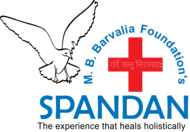Editorial – Miasms, Genetics & Homoeopathic Prescribing.
-Dr. Praful Barvalia
The world around us has advanced since the time of Hahnemann. The great scientist always updated his ideas and so should do his ardent followers, keeping fundamentals intact. Aphorism 3 emphasizes on the comprehension of nature of diseases. The understanding of disease and its management is related to man’s understanding of himself and his environment. Life is an evolutionary phenomenon and so is man and his disease. It is imperative for a Homoeopathic physician to integrate his knowledge, thereby improving his range and depth of perception so that his appreciation of the phenomenon is accurate.
This is the time when genetics has achieved a recognized role as a core discipline that deals with human variability and human heredity and has given fresh insight about the inner nature of diseases, their causes, concomitants, course and consequences. A homoeopathic physician wedded to holistic perspective cannot afford to ignore this discipline.
Masters have taught us that miasmatic concept gives unique perspective to understand man in his totality. Each human being right from the moment of conception is characterised by a miasmatic modulation through which his individuality is constantly trying to emerge. Greater the miasmatic obstacle, deeper and extensive are its manifestations in health and disease. Unfolding occurs as per master plan. This is the most superlative abstraction of medical genetics from the Hahnemannian angle. What is required is:
Thorough analysis of Mendillian laws like Unit Inheritance, Segregation, Independent Assortment to explore constitutional types, miasmatic inheritance and behaviour of susceptibility in the family tree.
Meticulous, long follow-up of the cases with single gene disorders, chromosome disorders or multifactorial disorders put on Homoeopathic constitutional – miasmatic treatment and exploring its effects at the clinical, biochemical and genetic levels. This will involve molecular cytogenics (study of chromosomes their structure and their inheritance).
Making efforts to touch the “genotype” by establishing deeper similarity. Genotype of a person is his or her genetic constitution, either collectively at all loci or more typically at a single locus. The “phenotype” is the observable expression of a genotype as a morphological, biochemical or molecular trait.
Clear understanding of molecular and biochemical basis of genetic diseases. Homoeopathic intervention will demand correcting the deep-seated dyscrasia….. which will be a gradual process and quite often through layers.
The following case from practice will illustrate this:
Mrs. S. D, 41 years old female presented with acute excruciating pain in limbs and back. She was a case of B Thalassemia and sickle cell trait.
She would come down with severe exacerbation of sickle cell crises leading to intense pains mild fever and almost become bedridden. I was called to see her during such acute exacerbation, following evolution of the disease.
She was diagnosed with this illness 12 years back. She would come down frequently with these acute episodes – once every 2 months. Hb will fall to 6 or 7 and the episode would last for 15 days. Twice she was given blood transfusion. She remained weak and frail.
Each episode comes up suddenly. This time it began with intense pain in right shoulder followed by severe pain in left hip. After few hours it was left shoulder followed by right hip. Pains were excruciating making her bedridden within a day. Allopathic medication gives her comfort only after 6 days. Pains are worse by slightest touch. Intense pain in shin of right tibia. She is thirstless, chilly and has bitter taste. She belongs to a ]ain family. She has 2 sons. Her husband is clerk in a company. Her pains were quite intense and she was hardly in any mood to speak.
What stood out was Diagonal affection (Direction of pains and symptoms), Intense pain in shin of tibia, touch and thirstless and chilly characteristics. When we correlate this with pains caused by ischnemia due to haemolysis affecting metaphysis, Manganum comes up which covered tubercular – syphilitic affection of bones. Manganum 200 every 4 hrs promptly relieved her pains and she started walking within 2 days. Later on constitutional type, Natrum Mur became apparent and was administered. She needed few doses of Tuberculinum in remission. Her Hb became stable at around 10 and gradually Serum Ferrittine level also came down. After 2 years phase changed, she came down with chills and fever with episode of U. T. I. Sepia picture came and cured U. T. I. Biochemical parameters showed tremendous improvement despite Hoemoglobinopathy. She required Nat. Mur periodically and Manganum phase came hardly twice in last 6 years.
Such cases demonstrate effective clinico-pathalogic-miasmatic correlations, made and applied in practice. Manganum totality, use of Tuberculinum and posology used; all were dependent on the understanding of nature of illness and miasmatic state in Haemolytic Anemea. Integration of miasmatic totality is crucial for the Anamnesis of cases of genetic disorder. Revisiting this area with Homoeopathic perspective will be immensely helpful to the entire medical fraternity and help them to handle many serious genetic disorders where very little is done by others. Nosodes, being the most potent and deeper forces of our armamentorium can play a decisive role. This will demand wholehearted acceptance of miasmatic doctrine, keeping our analytical faculty open, agile and active. Our ambivalence to our own philosophy will be disastrous and self-destructive.

